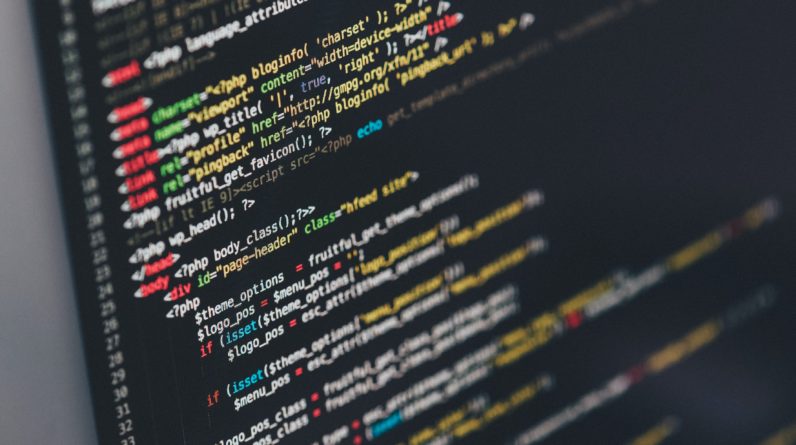
In today’s world where remote work has become the new norm, it’s crucial to prioritize the security of your data. As we navigate the digital landscape, cyber threats loom large, making it more important than ever to understand the basics of cybersecurity. “Cybersecurity 101: Protecting Your Data in a Remote Work Environment” offers practical tips and strategies to ensure that your valuable information is safeguarded while working remotely. From strong passwords to secure networks, this article will equip you with the knowledge you need to safeguard your data and enjoy a worry-free remote work experience.
Recognizing the Importance of Cybersecurity in a Remote Work Environment
In today’s digital age, remote work has become increasingly common and essential for businesses and individuals. While it offers numerous benefits such as flexibility and improved work-life balance, it also brings about new challenges when it comes to cybersecurity. It’s crucial to understand the risks associated with remote work and take proactive measures to protect your data and ensure the security of your online activities.
Understanding the Risks of Remote Work
Working remotely means relying heavily on technology, which makes individuals more vulnerable to cyber threats. One of the most significant risks is the increased likelihood of data breaches, which can have severe consequences for both individuals and businesses. As remote employees access sensitive information from various locations, hackers find new opportunities to exploit vulnerabilities and gain unauthorized access to valuable data.
Exploring the Consequences of Data Breaches
Data breaches can have far-reaching consequences that extend beyond financial losses. The exposure of sensitive information can harm an individual’s or business’s reputation, erode trust, and lead to legal ramifications. In addition to financial consequences, the loss of intellectual property or confidential client data can be damaging to a company’s competitive advantage and market position. It is essential to recognize the gravity of data breaches and take proactive steps to prevent them.
Recognizing the Value of Data Protection
Protecting data should be a top priority for everyone, especially in a remote work environment. Every piece of information you handle is valuable, whether it’s personal data or company-related information. By implementing robust data protection measures, you safeguard not only your own sensitive information but also that of your clients and the organization you work for. Ensuring the security and integrity of data is crucial for maintaining trust and maintaining a competitive edge in the market.
Establishing Strong Passwords
One of the fundamental steps in ensuring cybersecurity is creating strong passwords. Weak passwords are a major vulnerability that hackers can exploit easily. When establishing passwords, it’s essential to follow best practices to minimize the risk of unauthorized access.
Creating Complex Passwords
Creating complex passwords involves using a combination of uppercase and lowercase letters, numbers, and special characters. Avoid using easily guessable information such as birthdays or common phrases. It’s crucial to create unique passwords for each online account to prevent a breach in one account from compromising others.
Using Two-Factor Authentication
Two-factor authentication adds an extra layer of security by requiring users to provide two separate pieces of evidence (typically a password and a unique code sent to a device) to gain access to an account. This added step significantly reduces the risk of unauthorized access.

Avoiding Password Sharing
Sharing passwords, even with trusted colleagues, increases the likelihood of a security breach. It’s important to emphasize the importance of maintaining the confidentiality of passwords and avoiding loose handling or sharing them with others.
Securing Your Wi-Fi Network
Your home Wi-Fi network is a gateway that connects your devices to the internet. Securing this network is a critical step in preventing unauthorized access to your data.
Changing Default Login Credentials
When setting up a new router, it’s common for it to come with default login credentials. Failing to change these default credentials makes it easier for hackers to gain unauthorized access to your network. It’s essential to change these credentials to a unique username and a strong password.
Using Encryption
Enabling encryption for your Wi-Fi network adds an extra layer of security by encoding the data transmitted between your devices and the network. This makes it nearly impossible for hackers to intercept and decipher the information.
Enabling a Firewall
A firewall acts as a barrier between your network and the internet, monitoring and controlling incoming and outgoing network traffic. Enabling a firewall provides an additional layer of protection by filtering out potentially malicious traffic.
Regularly Updating the Router’s Firmware
Router manufacturers often release updates that address security vulnerabilities and provide improved protection against emerging threats. Regularly updating your router’s firmware ensures that you benefit from the latest security enhancements and safeguards your network from potential breaches.
Preventing Phishing Attacks
Phishing attacks remain a prevalent method used by hackers to deceive individuals into revealing sensitive information or clicking on malicious links. Recognizing and preventing phishing attempts is crucial in maintaining your cybersecurity.

Identifying Phishing Attempts
Phishing emails often appear legitimate, mimicking trusted sources such as banks, online services, or even colleagues. It’s important to be vigilant and look for signs of phishing attempts, such as suspicious email addresses, grammatical errors, and requests for personal or financial information.
Being Cautious with Email Attachments and Links
Avoid opening email attachments or clicking on links unless you are confident about their source and legitimacy. Even if an email appears to be from a recognized sender, it’s always best to verify the authenticity of the email and its attachments before opening or downloading them.
Using Anti-Phishing Software
Anti-phishing software is designed to detect and block phishing attempts, providing an additional layer of protection. Installing and regularly updating anti-phishing software on your devices can help mitigate the risk of falling victim to phishing attacks.
Utilizing a Virtual Private Network (VPN)
A Virtual Private Network (VPN) is a crucial tool in maintaining online privacy and security, particularly when working remotely.
Understanding VPNs and Their Functionality
A VPN encrypts your internet connection and routes it through a secure server, making it difficult for hackers to intercept and decipher your data. It also masks your IP address, adding an extra layer of anonymity.
Encrypting Data with a VPN
When connected to a VPN, all data transmitted between your device and the VPN server is encrypted. This ensures that even if intercepted, the data remains unreadable to unauthorized individuals.
Choosing a Reliable VPN Service
It’s important to choose a reputable and trustworthy VPN service to ensure proper data protection. Look for a VPN service that offers robust encryption, a strict no-logs policy, and a wide range of server locations.

Implementing Secure File Storage and Sharing Solutions
When working remotely, it’s crucial to ensure the security of your file storage and sharing practices to protect confidential information.
Using Encrypted Cloud Storage
Using encrypted cloud storage services adds an extra layer of protection for your files. Encryption ensures that your files are unreadable to unauthorized individuals, even if the cloud storage service itself is compromised.
Applying File-Level Encryption
File-level encryption involves encrypting individual files before storing or sharing them. This provides an additional layer of security, ensuring that even if one file is compromised, the rest remain protected.
Implementing Access Controls
Implementing access controls allows you to control who can access your files and what they can do with them. Set permissions carefully and regularly review and update access rights to ensure data remains secure.
Educating Employees on Cybersecurity Best Practices
To establish a strong security culture in a remote work environment, it’s crucial to educate employees on cybersecurity best practices and provide them with the necessary tools and knowledge to protect themselves and the organization.
Conducting Training Sessions on Recognizing Security Threats
Regular training sessions focusing on recognizing security threats such as phishing attempts, malware, and social engineering techniques are essential. By educating employees about common cybersecurity risks, you empower them to make informed decisions and avoid falling victim to cyber threats.
Providing Guidelines for Safe Online Behavior
Clear and concise guidelines outlining safe online behavior and best practices should be communicated to all employees. This includes maintaining strong passwords, avoiding suspicious links, regularly updating software, and protecting sensitive information.

Promoting Regular Updates and Patching
Staying updated with the latest security patches and software updates is crucial in mitigating vulnerabilities. Regularly remind employees to install updates promptly across all devices they use for work to ensure they benefit from the latest security enhancements.
Regularly Backing Up Data
Regularly backing up your data is a vital practice to protect against data loss and potential ransomware attacks.
Choosing the Right Backup Solution
Selecting a reliable backup solution that suits your needs is crucial. Consider factors such as storage capacity, ease of use, and the ability to automate backups.
Automating Backup Processes
Automation ensures that backups are performed consistently and eliminates the risk of human error. Set up automated backups to occur at regular intervals, ensuring minimal data loss in the event of an incident.
Testing Data Recovery Procedures
Regularly test your data recovery procedures to ensure that you can effectively restore data in case of a breach or system failure. Simulating data recovery scenarios identifies any potential issues and allows for adjustments to be made as necessary.
Monitoring and Detecting Security Incidents
Actively monitoring and detecting security incidents is essential to identify and respond promptly to potential threats to your remote work environment.
Installing Intrusion Detection Systems
Intrusion Detection Systems (IDS) analyze network traffic and identify potential threats or vulnerabilities. By alerting you of suspicious activities, IDS helps you address potential security breaches promptly.
Setting Up Security Information and Event Management (SIEM) Tools
SIEM tools aggregate and analyze the log data generated by various network devices and systems, helping detect security incidents. Implementing SIEM tools provides a comprehensive view of your network’s security posture.
Performing Regular Log Analysis
Regularly analyzing system logs and network traffic helps identify anomalies or patterns that may indicate a security incident. Promptly addressing any suspicious activities minimizes the potential impact on your remote work environment.
Identifying Anomalies and Responding Promptly
Being vigilant and proactive when it comes to identifying anomalies and potential security incidents is crucial. Implement incident response protocols that enable quick detection, investigation, containment, and recovery to minimize any potential damages.
Preparing an Incident Response Plan
Having a comprehensive incident response plan in place ensures that you are prepared to handle security incidents effectively.
Formulating a Comprehensive Incident Response Plan
An incident response plan outlines the step-by-step process to be followed in the event of a security incident. It should include clear guidelines on incident reporting, containment, investigation, and recovery.
Defining Roles and Responsibilities
Clearly defining roles and responsibilities within the incident response plan ensures that everyone knows their specific tasks and responsibilities during an incident. This promotes efficient coordination and decision-making in high-stress situations.
Testing and Updating the Plan
Regularly testing and updating the incident response plan ensures that it remains effective and addresses the evolving threat landscape. Conducting simulated drills allows you to identify any gaps or areas that require improvement. Update the plan accordingly to ensure it aligns with the latest security best practices.
In conclusion, recognizing the importance of cybersecurity in a remote work environment is crucial for protecting your data and ensuring the security of your online activities. By implementing strong passwords, securing your Wi-Fi network, preventing phishing attacks, utilizing a VPN, implementing secure file storage solutions, educating employees, regularly backing up data, monitoring and detecting security incidents, and preparing an incident response plan, you can establish a robust cybersecurity posture and mitigate potential risks. Stay vigilant, stay informed, and prioritize cyber defense to maintain the integrity and confidentiality of your data in the remote work environment.






